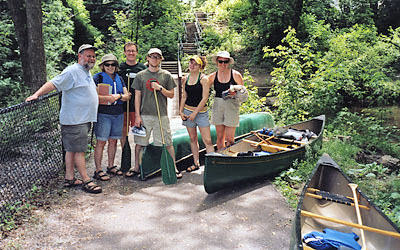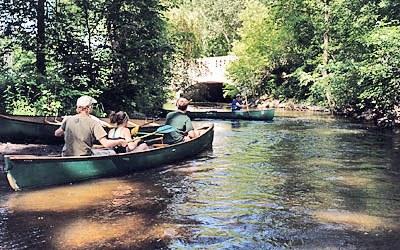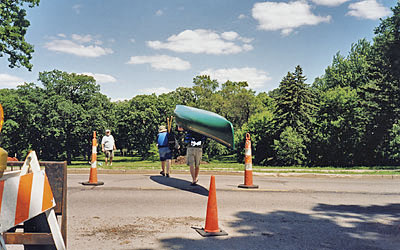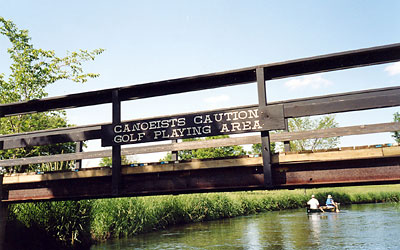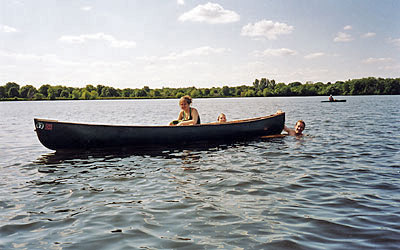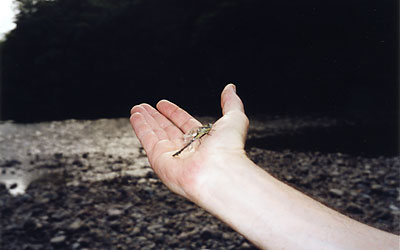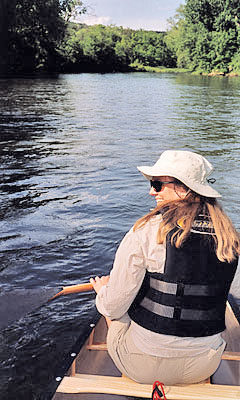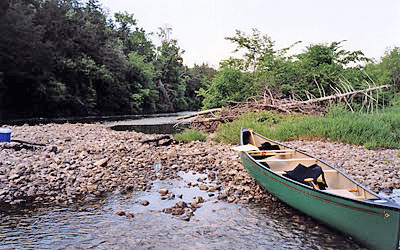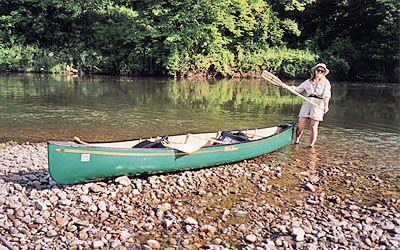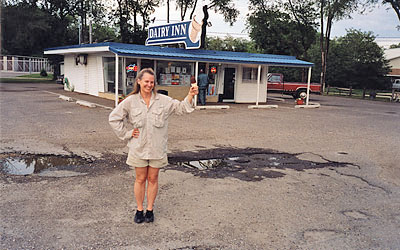
In the southeastern corner of Minnesota the Root River cuts a deep gorge through more of the “driftless” region, that higher ground that the last retreating glacier did not grind down to flat plains. Ian and I selected the section of river that runs between Chatsfield and Lanesboro, a stretch of water that is well known for the clear trout streams that flow into the Root River. The surrounding area is filled with rolling hills, pristine farms, and large stands of forests. We put in at the Chatsfield Bridge but not before being saved by the generous shuttling of our breakfast volunteer, Kay. I followed her car down lonely gravel country roads until we found the take-out at Moen’s Bridge. We dropped my car there and she kindly took me all the way back to where Ian was (almost) patiently waiting with our canoe to begin the trip. (Thank you, Kay, wherever you are!)

The weekend had brought dozens of canoes to the river but after the first big bend never saw another boat. ‑Limestone cliffs line sections of this river and we paddled
close to the undercut arch of one. We were astonished to find dozens of swallow nests clinging to the cliffside. They were equally astonished to find a pair of humans suddenly below them and in quick succession the small birds fired out of their nests, one after another, right over our heads. The nests are constructed of clay, tiny drip by tiny drip, like a mud castle. They start with a wide, basket-like shape that hugs the cliff, and leave the last bit open for coming and going. Throughout the day we passed many of these swallow villages with the birds’ bobbing beaks and shinning eyes just barely apparent inside the nests, followed by sudden swoops of wings.
I am beginning to sense that every river has a character of its own and this one could only be described as the Musical River. Small birds filled the trees, skies, and water way. While they flitted every-which-way their songs rose and fell with the passing bluffs. They seemed to make the air into a visible place, drawing long lines f
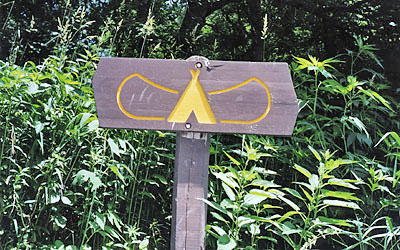
rom tree to river, river to tree, darting and gliding, always busy singing.- We had an early lunch, stopping at a canoe camping spot (which are marked by this wonderfully clear sign) and imagined the last campers who left the wooden spoon on the table. We passed a private campsite that had a tent, hammock, and its own ladder leaning against the steep bluff. These high bluffs so tightly hugged the river banks that we paddled another nine miles before finding a place that would allow us to pull up the canoe for a much needed rest. We scrambled up a steep muddy ledge to find a grassy clearing next to a huge corn field where we could listen to the birds and the wind in the deep quiet.
When Moen’s Bridge came into sight, the afternoon was easing into evening and the map showed we had traveled thirteen and a half miles. We hauled everything out, strapped the canoe on the car and headed back to Minneapolis. The world of noise and traffic and roadside restaurants made our human villages look especially careless and harsh after the musical beauty of the river-world.
